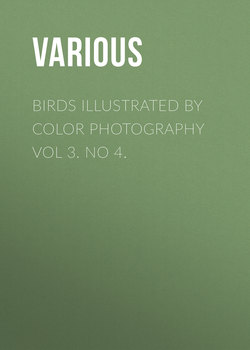Читать книгу Birds Illustrated by Color Photography Vol 3. No 4. - Various - Страница 2
FOREIGN SONG BIRDS IN OREGON
ОглавлениеIN 1889 and 1892 the German Song Bird Society of Oregon introduced there 400 pairs of the following species of German song birds, to-wit: Song Thrushes, Black Thrushes, Skylarks, Woodlarks, Goldfinches, Chaffinches, Ziskins, Greenfinches, Bullfinches, Grossbeaks, Black Starlings, Robin Redbreasts, Linnets, Singing Quails, Goldhammers, Linnets, Forest Finches, and the plain and black headed Nightingales. The funds for defraying the cost of importation and other incidental expenses, and for the keeping of the birds through the winter, were subscribed by the citizens of Portland and other localities in Oregon. To import the first lot cost about $1,400. After the birds were received they were placed on exhibition at the Exposition building for some days, and about $400 was realized, which was applied toward the expense. Subsequently all the birds, with the exception of the Sky and Wood Larks, were liberated near the City Park. The latter birds were turned loose about the fields in the Willamette Valley.
When the second invoice of birds arrived it was late in the season, and Mr. Frank Dekum caused a very large aviary to be built near his residence where all the sweet little strangers were safely housed and cared for during the winter. The birds were all liberated early in April. Up to that time (Spring of 1893) the total cost of importing the birds amounted to $2,100.
Since these birds were given their liberty the most encouraging results have followed. It is generally believed that the two varieties of Nightingales have become extinct, as few survived the long trip and none have since been seen. All the other varieties have multiplied with great rapidity. This is true especially of the Skylarks. These birds rear from two to four broods every season. Hundreds of them are seen in the fields and meadows in and about East Portland, and their sweet songs are a source of delight to every one. About Rooster Rock, twenty-five miles east of Portland on the Columbia, great numbers are to be seen. In fact the whole Willamette Valley from Portland to Roseburg is full of them, probably not as plentiful as the Ring-neck Pheasant but plentiful enough for all practical purposes. In and about the city these sweet little songsters are in considerable abundance. A number of the Black Starling make their homes about the high school building. The Woodlarks are also in evidence to a pleasing extent.
There is a special State law in force for the protection of these imported birds. They are all friends of the farmer, especially of the orchardists. They are the tireless and unremitting enemy of every species of bug and worm infesting vegetables, crops, fruit, etc. – S. H. Greene, in Forest and Stream.
